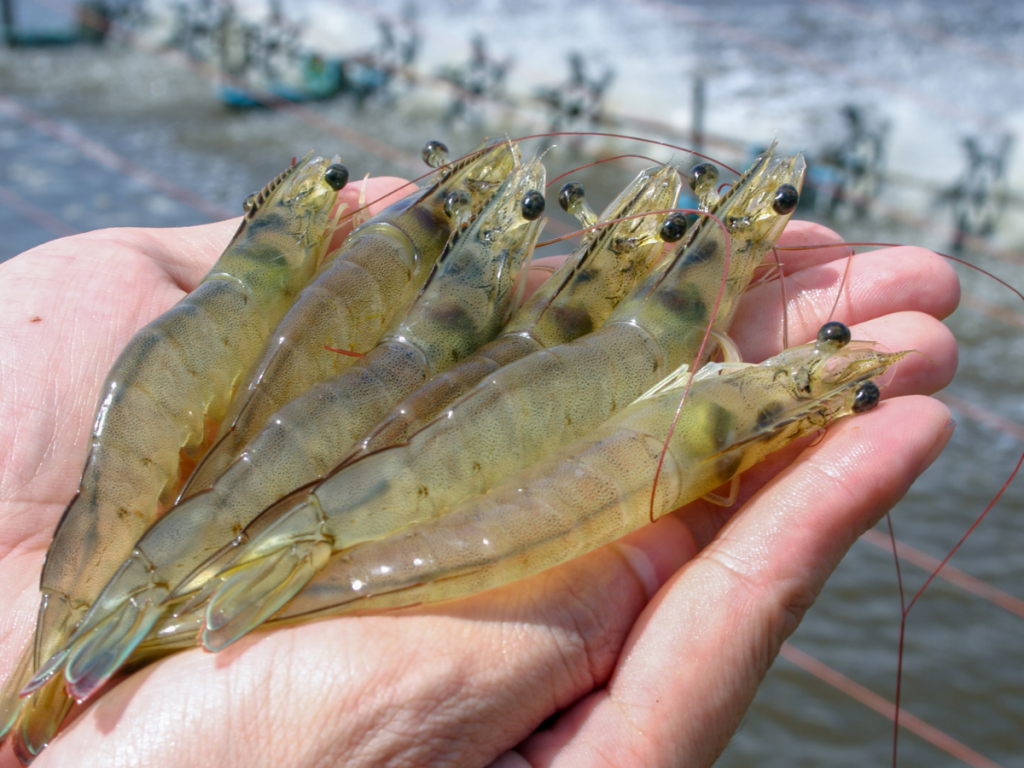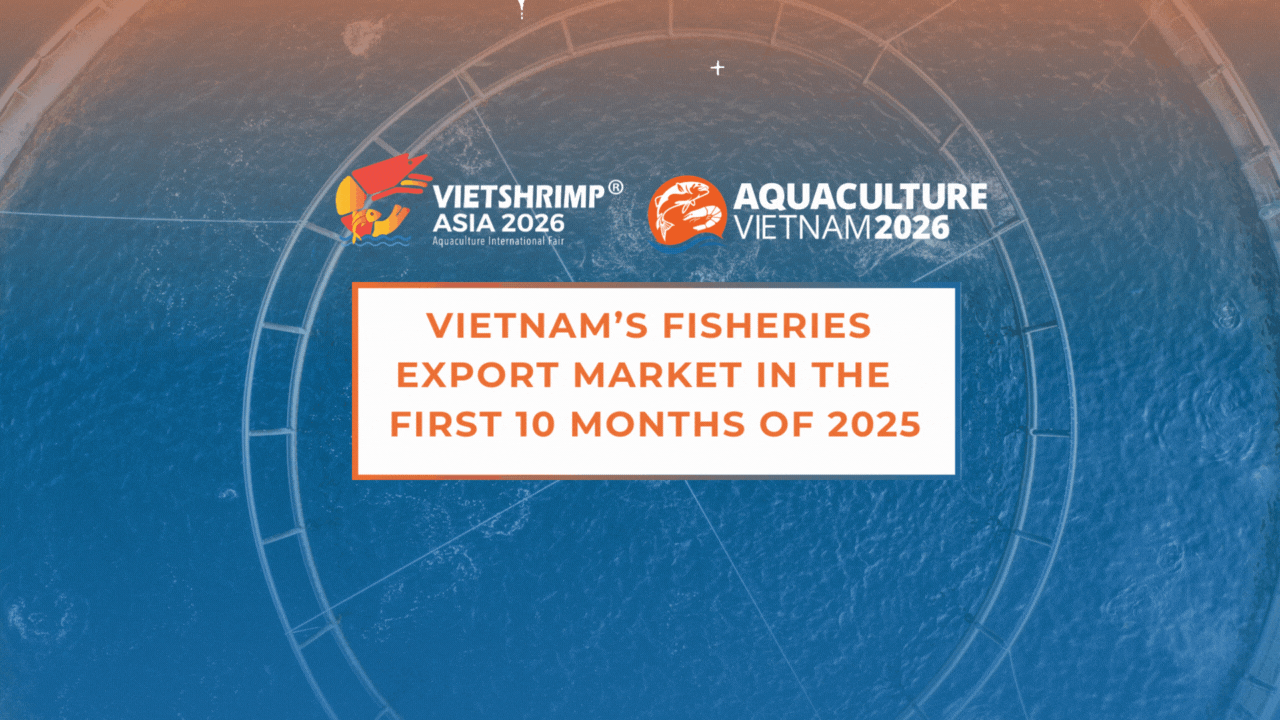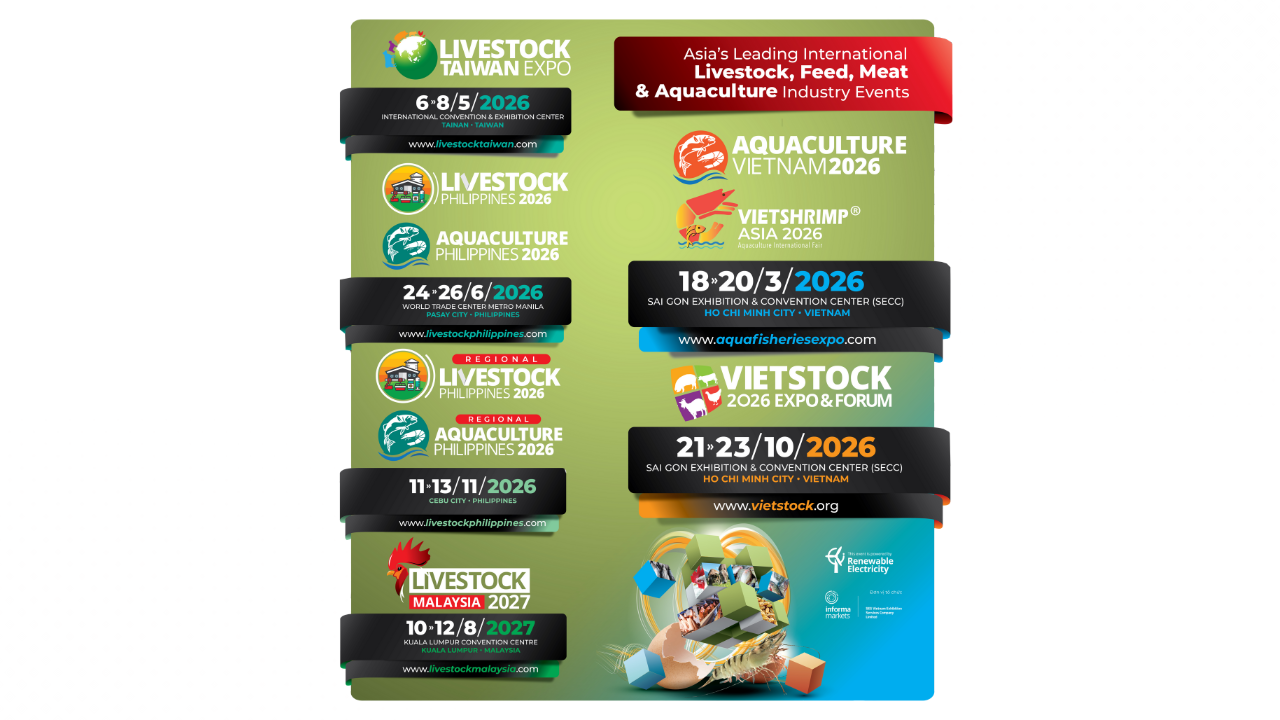VIETNAM FISHERIES 2025: OVERVIEW, KEY MARKETS AND INNOVATION TRENDS
The year 2025 marks a pivotal stage for Vietnam’s fisheries sector, as it not only shows clear signs of recovery in export value but also faces new challenges from market volatility and increasingly strict demands on quality, traceability, and sustainability. In this context, green and sustainable development has emerged as an inevitable strategic direction, requiring enterprises to adapt quickly in order to maintain their competitive edge.
In line with this trend, the international exhibition VietShrimp Asia 2026 & Aquaculture Vietnam 2026 is expected to become a premier meeting point for the business community, bringing together experts across the fisheries value chain to share solutions, update technologies, strengthen partnerships, and shape a sustainable development pathway for the entire industry.
VIETNAM FISHERIES EXPORT PERFORMANCE BY MID-2025
According to the Vietnam Association of Seafood Exporters and Producers (VASEP), in July 2025, Vietnam’s fisheries export value was estimated at USD 971 million, up 6.1% year-on-year. Cumulatively in the first six months, the sector reached USD 5.25 billion, an increase of 19.5% compared to 2024, with a total output of 4.5 million tonnes (+3.1%). Of this, capture production was estimated at 1.97 million tonnes, while aquaculture output reached 2.57 million tonnes.
Shrimp continued to play the leading role, generating USD 2 billion in the first half of the year, up 27% YoY. With this momentum, Vietnam’s shrimp exports are forecast to reach USD 3.6 – 3.8 billion for the whole of 2025, especially if businesses successfully leverage opportunities in Asian markets, the EU, and member countries of the Comprehensive and Progressive Agreement for Trans-Pacific Partnership (CPTPP).

From a broader perspective, Vietnam’s fisheries export value in 2025 is projected to reach USD 9–9.2 billion, representing a decline of nearly 10% compared to 2024. Shrimp is expected to account for the largest share at USD 3.6–3.8 billion, followed by pangasius at around USD 1.8 billion, tuna at USD 850–900 million, and other aquatic products close to USD 3 billion.
To realize these targets, enterprises need to proactively respond to market fluctuations while focusing on diversifying export destinations, upgrading processing capacity and technologies, improving product quality, and building stable, sustainable raw material supply chains that meet increasingly stringent requirements from global markets.
VIETNAM’S LEADING FISHERIES EXPORT MARKETS
In the first quarter, Vietnam’s fisheries reached 56 major markets worldwide, with China, the US, Japan, and Australia remaining the most significant destinations and key drivers of industry growth.
During this period, Vietnam recorded an impressive recovery, with fisheries export value reaching USD 2.45 billion, up 26% year-on-year. In March alone, exports were close to USD 889 million (+20% YoY), showing sustained growth momentum despite signs of slowing compared to the first two months. The top 10 markets contributed USD 1.78 billion, an increase of 24% YoY, accounting for 77% of Vietnam’s total fisheries export value.
China rose to become the largest market with USD 464 million, surging 74% YoY, followed by the US at USD 371 million (+14.8%). Other markets also saw strong growth: Thailand reached USD 69.8 million (+27.5%), Canada USD 61.8 million (+22%), Germany USD 49 million (+26%), Russia USD 48 million (+11%), and Brazil achieved USD 46.7 million, a remarkable +70% YoY.

VIETNAM FISHERIES TREND: GREEN AND SUSTAINABLE DEVELOPMENT
Despite significant achievements, Vietnam’s fisheries sector continues to face existential challenges: declining natural resources, environmental pollution, the impacts of climate change, and increasingly stringent requirements from international markets. In recent years, the Party and the State have introduced numerous policies to accelerate the application of science and technology, innovation, and digital transformation in the fisheries sector. These initiatives are regarded as crucial breakthroughs in the process of global integration, serving as key drivers for building a modern production force, improving production relations, preventing risks of stagnation, and laying the foundation for national advancement in the new era, in line with Resolution No. 57-NQ/TW.
Amid rising global food demand, while capture fisheries remain capped at stable levels due to overexploited fishing grounds, aquaculture is expected to become the main source of supply. This underscores the urgent need for research and the application of advanced, environmentally friendly technologies—both to enhance production capacity and competitiveness and to achieve long-term development goals toward 2030 and vision to 2045.
Sustainable and green development has thus become the guiding principle, shaping the transformation of production models toward eco-friendliness, efficient resource use, social welfare, and long-term ecosystem preservation. In practice, Vietnam has already begun its first steps in “sustainable aquaculture,” paving the way for a new phase of development.
Biofloc Technology: Currently implemented primarily by farms with strong financial capacity and advanced technical know-how. Compared with the full biofloc model, the semi-biofloc system has been more widely applied in brackish water shrimp farming in coastal provinces. Practical results show that this technology delivers high economic efficiency, helps prevent certain shrimp diseases, and reduces environmental impacts.

Recirculating Aquaculture Systems (RAS): This technology has been applied at several brackish-water shrimp hatcheries operated by major enterprises and has initially delivered positive results. It has also been piloted in pangasius farming in An Giang and Dong Thap; although the economic efficiency has not yet been high, it has laid the groundwork for further research and improvements. A key advantage of RAS is its ability to filter and treat water within a closed-loop cycle, minimizing water exchange while maintaining strong environmental control. As a result, the system saves water, reduces pollution, prevents disease outbreaks, and enhances the growth rate of farmed species. Notably, shrimp raised in RAS often exhibit superior appearance—bright, clean, and high-quality—making them more marketable and commanding better prices.

Traceability: Facing increasingly stringent requirements on traceability from major markets such as the EU, the US, and Japan, Vietnamese fisheries enterprises have been accelerating digital transformation across their supply chains. Many companies have already adopted blockchain, QR codes, farm management software, and electronic logbooks to record and make production processes transparent. These technologies not only enhance consumer and importer trust but also strengthen the competitiveness of Vietnam’s fisheries sector in international markets.

Like many other industries, science, technology, and digital transformation are becoming both an urgent task and a core solution for Vietnam’s aquaculture to achieve rapid and sustainable growth in the new era. At the same time, “greening” is not merely a global trend but a vital strategy for the fisheries industry to maintain its position and increase value in the 21st century. This is the key to realizing the sector’s development goals and contributing to the successful implementation of major national orientations under Resolution 57/NQ-TW.
VIETSHRIMP ASIA 2026 & AQUACULTURE VIETNAM VIETNAM 2026: STRATEGIC SOLUTIONS FOR THE FISHERIES SECTOR
As Vietnam’s fisheries industry enters a new growth phase, updating technology trends, adopting sustainable models, expanding markets, and building strategic partnerships become more critical than ever.
For this reason, Aquaculture Vietnam 2026 and VietShrimp Asia 2026 will be co-hosted from March 11–13, 2026 at SECC, Ho Chi Minh City, providing a highly specialized platform that brings together cutting-edge technologies, advanced equipment, and comprehensive solutions across aquaculture, processing, and fisheries management. Importantly, the exhibition will serve as a one-stop destination for the entire fisheries value chain—from broodstock, feed, and farming technologies to processing and export.
The exhibition presents a golden opportunity for Vietnamese fisheries enterprises to expand their markets, elevate their brands, and affirm their position on the global industry map. Exhibiting at the event not only allows companies to showcase products, technologies, and solutions to the right target audience but also opens doors to direct connections with thousands of potential partners, distributors, and investors both domestically and internationally—crucial factors for breakthroughs in an era of intense competition and deep integration. It is also where businesses can embrace sustainable aquaculture and digital transformation—key drivers for the long-term growth of Vietnam’s fisheries sector in the coming decade.
—
📅Date: 11 – 13/03/2026
📌Location: SECC, TP. Hồ Chí Minh
Booth registration: https://www.aquafisheriesexpo.com/en/dat-gian-hang/
For more information, please contact the Organising Committee:
Ms. Sophie Nguyen – [email protected] (Booth registration support)
Ms. Phuong – [email protected] (Group registration support)
Ms. Anita Pham – [email protected] (Media & marketing support)


